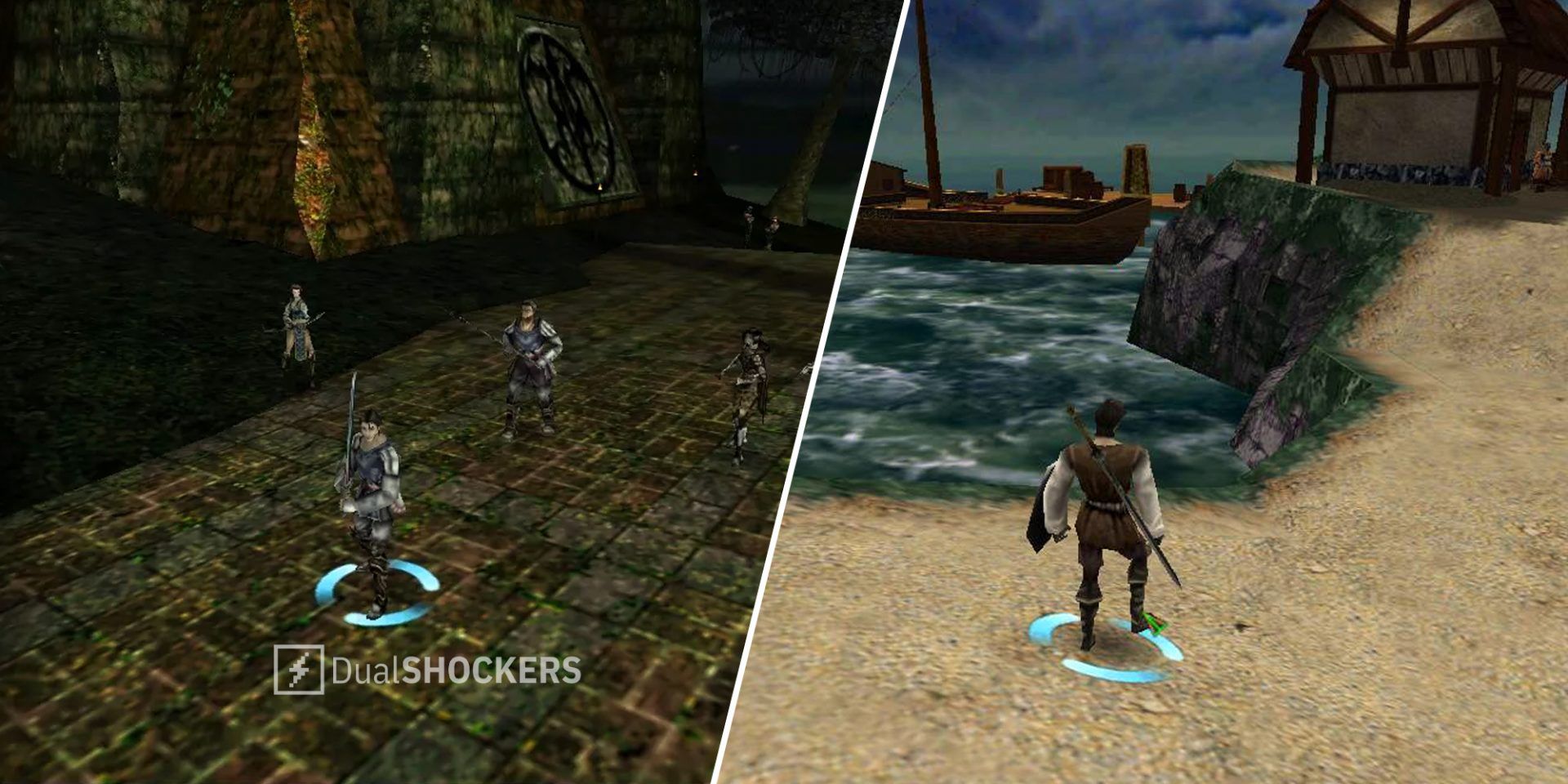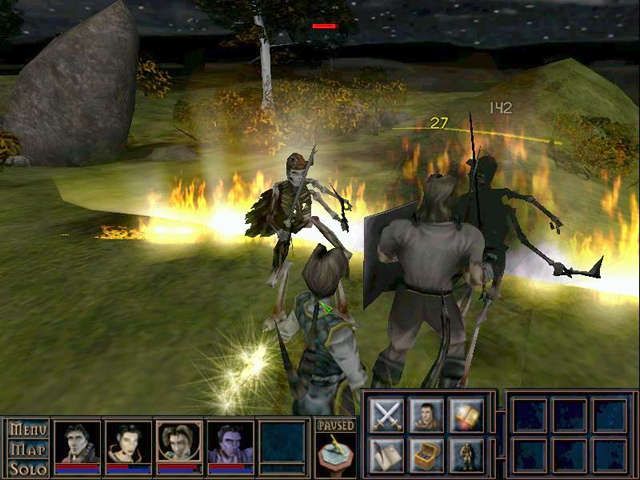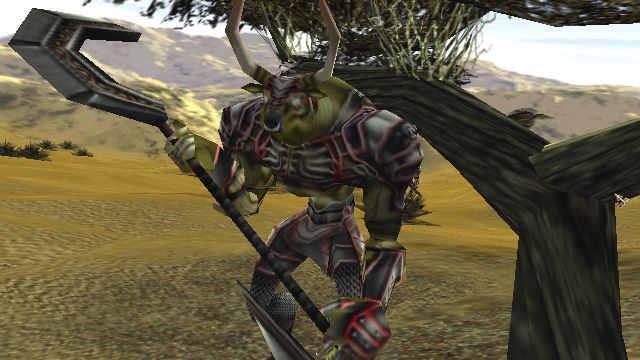It's the year 2000, the Millennium Bug hasn't brought down western civilisation, and Sony has just released what would become its best-selling console of all time, the Playstation 2. Having made the friendship-ending jump from N64 to PS1 in the previous generation, I was all aboard the Sony console hype train (even if my little teenage mind couldn't grasp the meaning of those David Lynch PS2 adverts), and ready to lap up whatever selection of middling launch titles would be available for it.
Another thing I couldn't wrap my still-forming teenage mind around was why 'RPGs' were so different on consoles to what they were on PC. I was captivated by the great D&D–inspired PC adventures of Fallout, Baldur's Gate, and Daggerfall, and never understood why consoles were seemingly unable to offer similarly vast adventures, or why 'RPG' on Sony consoles meant Final Fantasy, Vagrant Story, Chrono Cross, and other games that seemed so alien to how I understood the genre. It was my one hangup with being a console gamer in this era.
But that all changed with the launch of the PS2 in 2000, and the release of an unheard-of launch title for the console called Summoner.
Developed by Volition, Summoner was unlike anything that had previously come to consoles. It was an RPG decidedly in the western tradition, set on a vast medieval-fantasy continent that you explored via an overworld map, much like the classic Bioware and Black Isle RPGs (and like in those games, you could get ambushed in random encounters as you traversed the continent). The game had a mesmerising soundtrack too - evoking a fantasy world soundscape through a mix of classical instruments like decidedly electronic sounds like synths and overlapping choral elements.
Just listen to the overworld map tune (uploaded along with the rest of the soundtrack by the original composer. The subtle harpsichord, the dreamy chants - it all beckons you for adventure in that somewhat compressed hypnotic way that only soundtracks from this era could.
Summoner's story was very much a classic rags-to-riches manifest-destiny kind of tale, following regular peasant farmer Joseph as he flees his home village after accidentally summoning a demon to try and save it from invading armies. Linking up with three other companions - each with their well fleshed out backstories, grudges and side-quest - he heads out into the world to learn to understand his powers, and harness them to save his country of Medeva from an invasion by the neighbouring kingdom of Orenia.
Joseph -who with his high cheekbones and curtain haircut looks like a particularly provincial twist on a late 90s boyband member - is a summoner, and throughout the game procures rings that let him summon different demonic creatures to his aid. During battle, you could freely switch between controlling the different party members (including your demon), while the others continued to auto-fight. Its chain-based combat, whereby you had to perfectly time each strike when an icon popped up above your head, was an elegant console-friendly alternative to the more complex combat of cRPGs. In fact, the first Witcher game in 2007 used a similar combat system.
It was the scale of Summoner that felt unprecedented on consoles. The world spanned two neighbouring kingdoms and cities felt vast - the capital city Lenele was a bustling hub of sidequests and traders, while the Isle of Iona was a tropical island housing an ancient monastery that loomed over the sea. Each major new area would be introduced with a cutscene where a narrator introduced the history of the area while lovely hand-drawn sketches of it appeared on the screen.
Even the random encounters, which essentially took place in small arenas, were great at evoking a sense of scale; in the forested ones you could see the scenery undulating in the distance before it blended with skybox trees in the foreground which then blended with another layer of skybox trees in the background. Sure, Summoner's scale would often bump up against the limited technical resources of the PS2, and graphically it wasn't much to look at, but various clever tricks by Volition meant that it really felt like a world with a vast, complex history that you were writing just a small part of.
Weirdly, the game itself probably isn't as famous as a certain 'Summoner Geeks', an early viral video created by Volition (using audio from a skit by a comedy troupe called the Dead Alewives) that used several of the studio's characters, including Joseph, in a silly D&D session. Released in 2000, it may well have been one of the first viral video game videos ever created (don't quote me on that).
Summoner wasn't the quintessential RPG by any means, but it hit a lot of the notes that until that point had been lacking on consoles. It may very well have been the first to bring some of that cRPG-style magic over to a console series that until that point was defined by its strong cultural ties to Japan, and JRPGs.
It was a bold move by Volition and publisher THQ to try and conquer this new frontier, and clearly they did OK, because a sequel came out on PS2 and GameCube a couple of years later (which I never got round to playing myself). Morrowind in 2002 for Xbox was probably the first real 'landmark' PC RPG to come to consoles, establishing that this kind of game very much had a place on a gamepad and big screen, but it was the peasant farmer and his moody band of followers that led the way.



